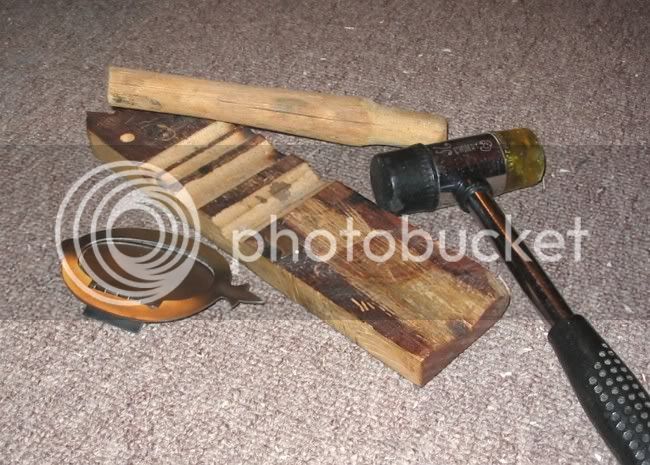Bull, let me start by stateing that I am not a rifle maker, just a hobbyist. I will try to explain how I do inlays but keep in mind, this is in no way the only way, likely not the best way, to do it but this method works reasonably well for me. For designing the inlay, I draw it on paper actual size. I then make several photocopies so I can try different engraving patterns. The advantage of useing a photocopy rather than the original drawing is that you can draw an engraving pattern and if you don't like it, you can erase it without losing your inlay outline. To cut out the inlay, I take one of my photocopies and put it face down on the sheet of brass/silver and rub the back with a rag with acetone on it. This will transfer the pattern to the metal and is very durable. Then go ahead and cut it out with a jewlers saw. I stay outside the line and do final finishing/shaping with files. I don't file much of a bevel on the edge of the inlay. Perhaps 1-2 degrees. I like the edge to be as close to perpendicular as possible but tilt the file SLIGHTLY, more to ensure that there is no bevel the wrong way rather that to add a bevel the right way. KEEP THE BEVEL TO AN ABSOLUTE MINIMUM. To inlay, I hold the inlay down with my finger an trace around it with a pencil. I use a mechanical pencil for the consistency of lead diameter. To cut the outline, I use a stabbing tool. It is perhaps 1/8" wide with a wooden handle on it. One could be made from a hack saw blade. I stab straight down inside the pencil line and follow around the entire outline. Extra care must be taken with inlays that have piercings to ensure you are on the right side of the line. After stabbing all the way around I use a small chisel to make kind of a bevel cut to remove some wood up to the outline. I then restab the outline deeper to prevent breakout. Then lower the entire area with a flat chisel. It is OK (desireable) to have the stabbed outline deeper than the finished depth of the inlay. The mortice must be deep enough to accept the thickness of the inlay and as flat as possible. If done properly, the inlay should NOT fit. The inlay should be a few thousanths larger than the mortice. I then take the inlay, hold it over the mortice and gently hammer it slightly into the mortice. Remove the inlay and it will leave a slight imprint of its exact outline. Then take the stabbing tool and stab straight down along this imprint. When making the imprint, do not get heavy handed as you can crush the wodd and ruin the edge. After stabbing to the imprint edge and removing the sliver of wood, try the inlay again. This time it shoud go in with some light blows of the hammer. However, don't drive it in all the way, just a bit. take it out and examine the outline carefully for any imprint indicating that more wood needs to be removed. When you are satisfied that the inlay will fit, tap it in all the way. BE ABSOLUTLY SURE THE DEPTH OF THE MORTICE IS RIGHT AND THE FIT IS RIGHT. You will not be able to get the inlay back out. Then carefully file the inlay down to flush, cleaning the file often. If you don't, the file could pick up a piece of brass and score the wood :cry:. As far as pins go, I always use extremely small wood screws. Drill the pilot hole, open the clearance hole in the inlay slightly, very lightly countersink and put in the screw. File the head off. This is all I use to hold inlays in. I've never used epoxy or glue. The screw will hold better than a pin :imo: and I like the effect of steel "pins" in brass or silver inlays. Almost forgot, the inlays alway must be bent to match the contour of the stock. To do this, I have several pieces of maple that I cut different size holes in 2-5". Then cut the piece in half through the hole so you have a U shape. Mount this in a vice and use it as a swage to put the bend in the inlay. I have several scrap pieces of maple (left overs from stock blanks) with various radius's also. Occationally I need to do a compound bend (on some cheak piece inlays) and these can also be done with a ball peen hammer and wooden swage blocks. However you do it, the inlay must be the same contour as the stock.
Cody







